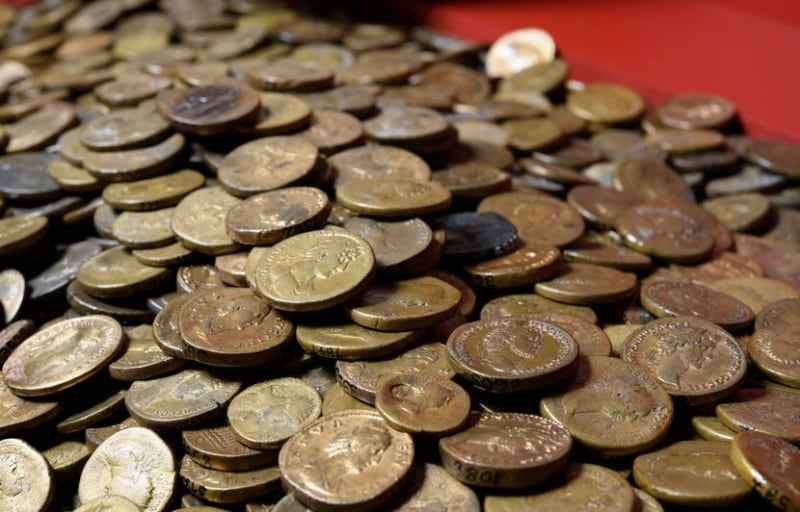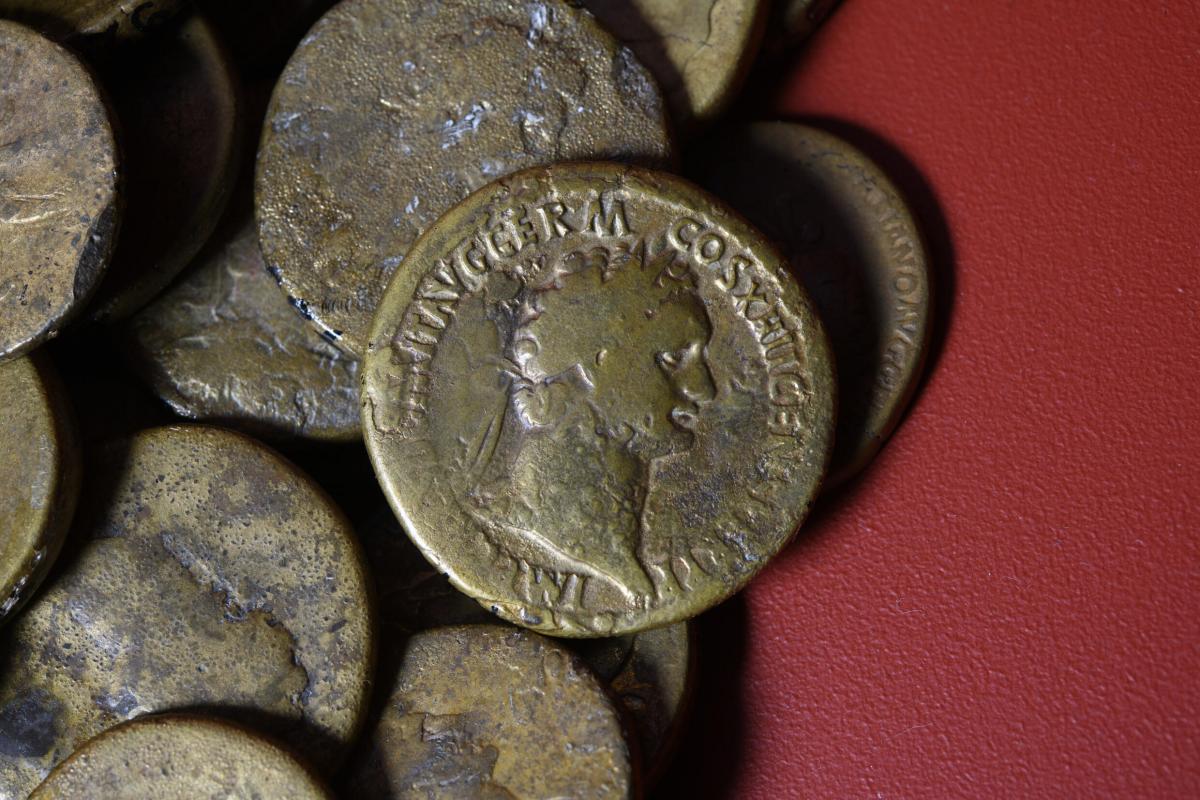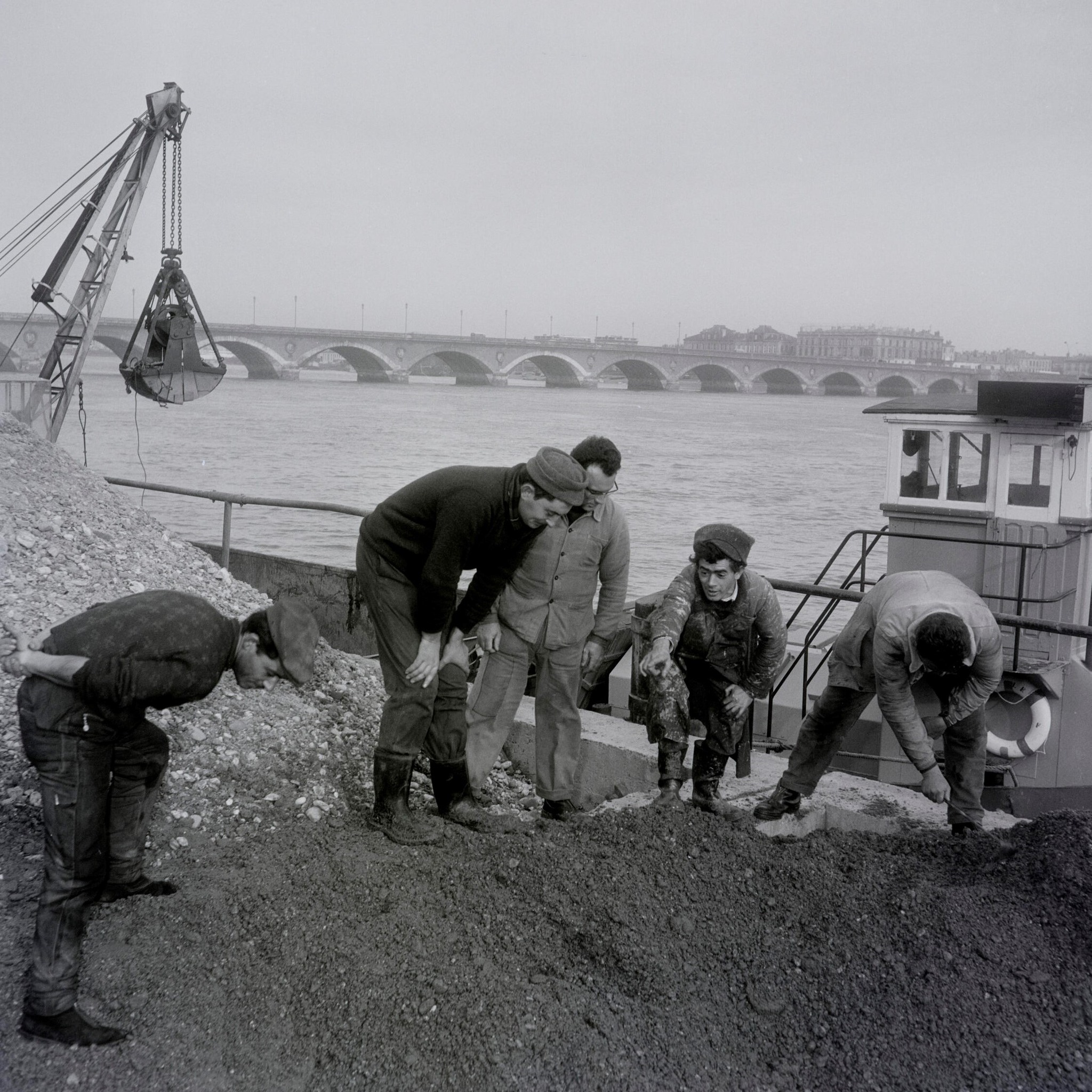Bomba 

The largest French hoard of Roman coins
Categories: Nálezy nejenom s detektorem v západní Evropě
A hoard of four thousand Roman coins from a sunken 2nd century merchant ship has been exhibited for the first time as a whole at the Museum of Aquitaine in Bordeux. The collection lay at the bottom of the Garonne River. Since the first discoveries in the 1960s, other coins have been found repeatedly, not only in the vicinity of the river, but also in building material or in the walls of houses that were built from river material. The latest coin so far was turned in last week.
The first coins were discovered accidentally in 1965 during excavation work for building material on the Garonne River. Former Bordeaux University professor Robert Étienne recognised that there were probably many moremore coins in the riverbed and, over the next six years, organised a series of systematic excavations at several sites along the river.
The coins are sesterces of orichalcum, a brass-like alloy of zinc and copper. The oldest specimens date from the reign of Emperor Claudius (41-54 AD), while the youngest coins were issued by Antonius Pius (138-161 AD). It is the largest and most important Roman coin hoard in France.
Charred wooden remains from the first research in the 1960s suggest that the coins came from a merchant ship that travelled upstream from Burdigala between AD 170 and 176. However, the vessel caught fire and sank with its cargo, including thousands of sesterces, many of which visibly changed on contact with the fire. Experts estimate that there may still be another 800 coins somewhere, which either ended up as the spoils of souvenir hunters during the first excavations or are still somewhere on the river bed or in the walls of nearby houses.
Even decades later, new specimens continue to turn up. They have been donated to the museum by institutions and individuals, and some coins have even been found on private building sites in river sand and gravel used as building material. Others have found their way into the walls of buildings in and around Bordeaux. An interesting story is that of one of the museum's conservators who, as a child, also found one of the Romanand gave it to the museum where he now works, and it was the Garonne treasure that partly passed through his hands. The most recent donation of a Roman coin from a sunken vessel was made a few days ago.
"This treasure is an opportunity to trace the trade in the Roman trading port of Burdigala (now Bordeaux), which lay on the back of"Laurent Védrine, director of the Aquitaine Museum, commented. The coins belong to the reigns of various emperors (also Hadrianus, Traianus, Commodus, for example) and the size of the coins and their designs allow numismatists to distinguish the coins more easily."
In the 2nd century, the value of 4,000 sesterces was equivalent to 25 amphorae of wine, but their cultural legacy and historical value is inestimable today. The study and conservation of the vast amount of coins took decades, and therefore the entire hoard has never been exhibited until now. The coins are exceptional not only in answering questions about the composition of orichalcum, but also in tracing and documenting the evolution of these coins over more than a century.
Roman Němec
Sources: thegaltimes.com, thehistoryblog.com, musee-aquitaine-bordeaux.fr


part of the coins were exhibited at the Bordeux town hall

some of the coins

coins at the time of the first excavations in 1965

Garonne set - detail of one of the orchalk coins

excavations in 1965

a selection of coins from the hoard
The article is included in categories:
- Archive of articles > Archaeology > Finds and rescue research abroad > Nálezy nejenom s detektorem v západní Evropě
Post
Áno 

Poklad Eauze ze 3. století byl objeven v roce 1985 díky záchrannému výzkumu, který předcházel stavbě nové budovy poblíž stanice Eauze. Daniel Schaad, který operace vedl, a jeho tým objevili čtyři kožené tašky obsahující 28 003 římských stříbrných mincí, tedy 120 kg, spoustu bronzových mincí, velké množství zlatých šperků, stříbrné slitky a několik dalších velmi starých předmětů. Poklad Eauze je jedním z největších pokladů, které byly kdy objeveny.
Zdroj: https://fr.m.wikipedia.org/wiki/Tr%C3%A9sor_d%27Eauze
Fotky: https://fr.images.search.yahoo.com/search/images;_ylt=Awr.jsgIxcdjr6gIIgmJyiI5;_ylu=Y29sbwNpcjIEcG9zAzIEdnRpZAMEc2VjA3Nj?p=Tr%C3%A9sor+d%27Eauze&fr=yfp-hrmob
Koukám, že vyčištěno až na kov. Tedy žádná patina, jak se tady pořád vyžaduje a kritizuje.
Ale nález samozřejmě parádní 
Třeba to takhle z říčního písku vypadá....
Centurion: Dávno tomu jsem našel jeden na polnostech a také na něm nebyla prakticky žádná patina.
Tady jsou vidět i lesklé zbytky stříbra na povrchu, to bylo čištěno.
Nejspíš chemicky.
Pěkná hromádka 
Když jsme u toho čištění..https://www.youtube.com/watch?v=YtjQmr7s9tA 



OBI kde tam vidis stribrnou minci?
Stříbrnou minci nikde, ale zbytky stříbření na povrchu.
Některé mince byly zřejmě suberáty.
Mnoooo, jestli nekde najdes suberat dupondia, ase, nebo sestercia (coz jsou mosazne a bronzove nominaly, ktere se nikdy nestribrili - nedavalo by to ani smysl), tak pred tebou smeknu.  Skus si neco o tech minci precist...
Skus si neco o tech minci precist...















